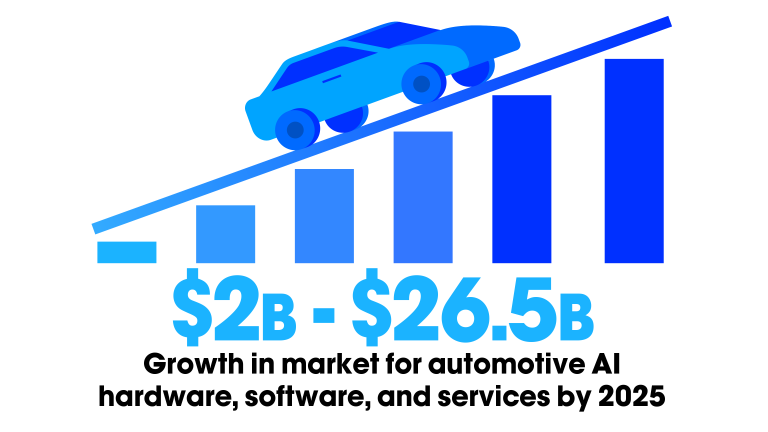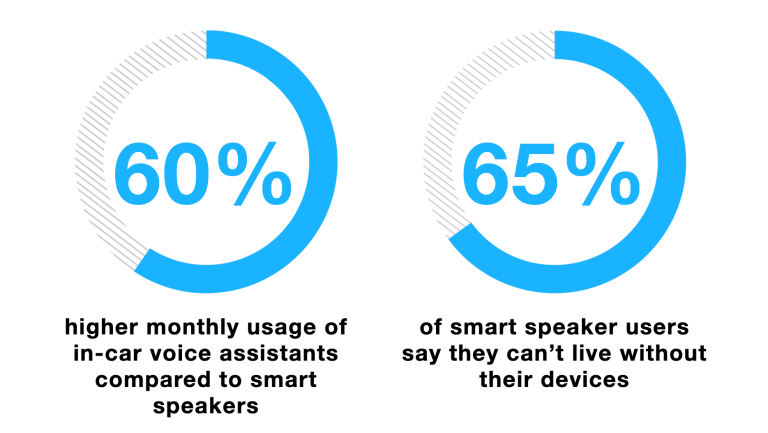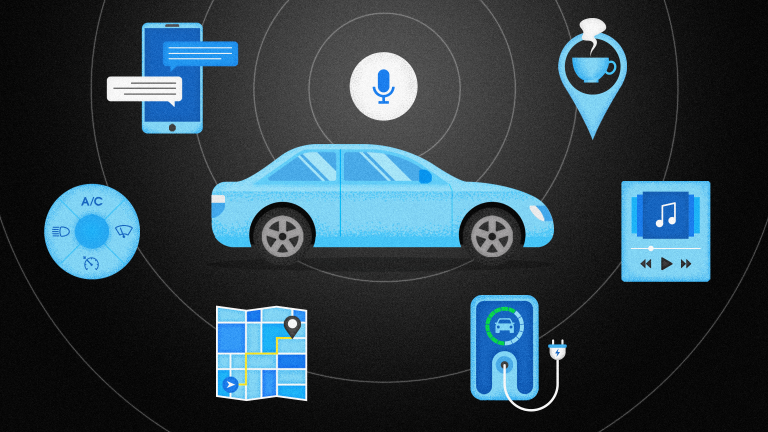With commute time, errands, and traveling, we spend a great deal of time behind the wheel—an activity that requires our hands’ and eyes’ full attention. Because looking down at a screen or pushing a button—even for a second—can make driving less safe, people have been quick to adopt voice interfaces while in their cars. A report by Voicebot.ai discovered that in-car voice assistants have 60% higher monthly usage than smart speakers, further illuminating the popularity of hands-free interfaces while driving.
Automotive Infographic
The automotive voice AI trends and consumer demands for voice assistants don’t seem to be slowing down, instead, they appear to be expanding exponentially. A report by Automotive World states that 90% of new vehicles globally are projected to have embedded voice assistants by 2028. As users continue to look forward to fast, convenient, efficient, and hands-free interactions with their cars, car manufacturers are investing in the latest voice technology to meet their demands.
2. Drivers are loyal to auto brands that build better experiences
Building brand loyalty, brand evangelists, positive reviews, and encouraging returning customers are still the major drivers for auto OEMs. But creating brand loyalty and building positive associations and lasting impressions with customers is not always as straightforward as it seems. Users are more likely to become loyal to a brand if they have experiences that improve their lives and well-being. Delivering an in-car voice assistant that makes the driving experience more enjoyable and safer has become a popular way for automakers to meet those needs.
Voice-enabled vehicles provide many benefits and functionalities for drivers. According to a study by Capgemini, the top in-car voice assistant use cases are playing music (85%), integrating with at-home voice assistants (78%), booking service appointments (74%), voice shopping (74%), and booking a cab or ride-share (69%). All of these capabilities expand the driving experience, making it more dynamic and memorable, by allowing the driver to complete tasks or access entertainment that would normally be difficult to achieve while safely driving.
Automotive Infographic
Voice assistants make the driving experience more enjoyable and efficient, allowing drivers to get more done while driving safely. Some tasks, such as playing music or rolling up and down the windows, are merely more convenient hands-free. Others, including integrating with smart technology, voice shopping, and ordering food, would not be possible to do while driving without a voice assistant. Voice-enabled vehicles enable the driver to get more done when spending a decent portion of every day behind the wheel.
In-car voice assistants also allow drivers to keep their hands on the wheel and their eyes on the road. In fact, a report by Adobe discovered that 92% of voice users say technology makes them feel safer while driving. According to The Zebra, 14% of fatal car crashes were attributed to cell phone use while driving. In-car voice assistants are more than just a means for easy, hands-free access to entertainment, navigation, and shopping. They are a technology that creates secure, enjoyable, and safer driving experiences.











